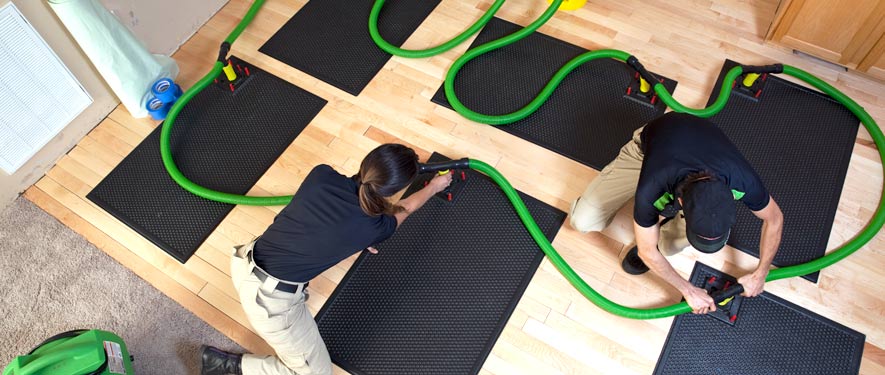
Step 4: Drying and Dehumidification
Our Water Damage Restoration Process
After the water has been extracted the walls and floors may appear to be dry; but its the water you can't see that can be the most damaging if it isn't addressed properly. Humidity levels in the home may cause mold to develop if drying doesn't occur in a timely manner. To determine how much drying equipment is needed, we calculate room measurements and figure out the appropriate amount of equipment necessary to get the job done efficiently. We then place commercial dehumidifiers and air movers to speed up evaporation and bring humidity levels down. We use our moisture meters and calculations daily to document the drying process and ensure we are moving towards our drying goals.
Drying / Dehumidification
Our Professionals will use room measurements, temperature, and relative humidity to determine the optimal number of air movers and dehumidifiers to dry your home or business. We’ll carefully monitor the progress using moisture meters until the materials return to acceptable drying goals.
- Use Dehumidification Equipment
- Use Monitoring Equipment to Track Progress
Monitor Floor and Walls
We check the moisture levels to monitor the drying process.
- Monitor Floors
- Monitor Walls
Drying Equipment
- Industrial-grade dehumidifiers help prevent secondary water damage like swelling and warping of floors, walls, and furniture.
- High-speed air movers create airflow across walls, carpets, pads, and furniture, which accelerates the evaporation of moisture.




 24/7 Emergency Service
24/7 Emergency Service





